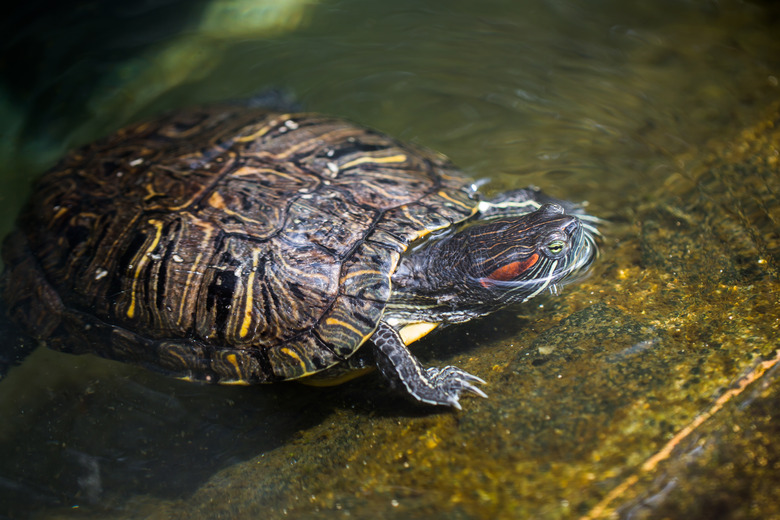Red-Eared Slider Turtle Skin Is Peeling
If your red-eared slider has a shell that is peeling, it is likely the normal molting process that many turtles undergo as they grow. However, it may be a sign of injury or illness, so be sure to monitor your turtle for abnormal shedding. It is helpful to be able to recognize the difference between normal shedding and unusual shedding.
Red-eared slider shell peeling
Red-eared slider shell peeling
If your red-eared slider's skin or turtle shell is peeling, it is likely perfectly normal. A turtle will shed his skin in pieces rather than in one single piece like a snake. In addition, he may shed the outer layer of the scutes, the scalelike plates on the shell, as he grows. This is what allows the shell to grow larger and accommodate his larger body.
Allow the shedding process to proceed naturally. It can be tempting to help peel the shedding skin, but you may peel off too much and leave your turtle open to infection. While most shedding is completely normal, be sure to keep an eye out for any abnormal signs that may indicate an infection or illness. Take your turtle to the veterinarian if you see abnormal skin or shell shedding.
Recognize abnormal shedding
Recognize abnormal shedding
Monitor your red-eared slider for signs that turtle shell peeling is more than normal molting. Check your turtle's skin to make sure that the newly exposed skin is not raw or bleeding. If your turtle is shedding more than just the outer layer of skin, it may be a sign of an underlying bacterial or fungal infection.
Algae may grow on your turtle's shell, which may at first glance look like shedding. If you catch this early, you can simply clean the green algae off her shell with a brush and clean the tank and filter more frequently to resolve the problem. However, in more serious cases, your turtle may need veterinary treatment to get rid of the algae and repair her shell.
Be aware that turtles are carriers of salmonella. The bacteria does not generally cause illness in your turtle, but it can be harmful to humans. Keep your turtle's habitat clean to reduce the risk of salmonella and other pathogens and be sure to wash your hands after handling your turtle.
Treating shell rot
Treating shell rot
There are a few bacteria and fungi that can cause shell rot, and if left untreated, it can lead to septicemic cutaneous ulcerative disease (SCUD). One common cause of SCUD is the bacteria Citrobacter freundii. It causes the scutes to shed off and release discharge. While shell shedding may be the most visible symptom, the effects of the infection are not limited to the shell. Other symptoms may include petechial hemorrhages, lethargy, anorexia, and necrosis of the liver.
Your veterinarian will clean and remove dead tissue from the wounds and prescribe an antibiotic to treat the underlying infection. Make sure to increase sanitation measures while your turtle is recovering and continue to keep his tank clean to prevent reinfection.
Other shell problems
Other shell problems
Abnormal peeling of your turtle's shell may be a sign of a shell injury. If you suspect an injury, such as if your turtle is dropped or another pet chews on your turtle's shell, make sure to take her to the vet. Even though the shell injury may seem minor, it is possible that she has suffered more serious internal injuries. A burn from a malfunctioning heater or light is another potential cause of skin and shell peeling.
Dietary deficiencies can also cause problems with your turtle's shell. A deficiency of vitamin A can cause full-thickness skin shedding, while a calcium deficiency can cause abnormal shell growth and in more severe cases, metabolic bone disease. Discuss any shell abnormalities with your veterinarian to determine the appropriate dietary adjustments and treatment options.
